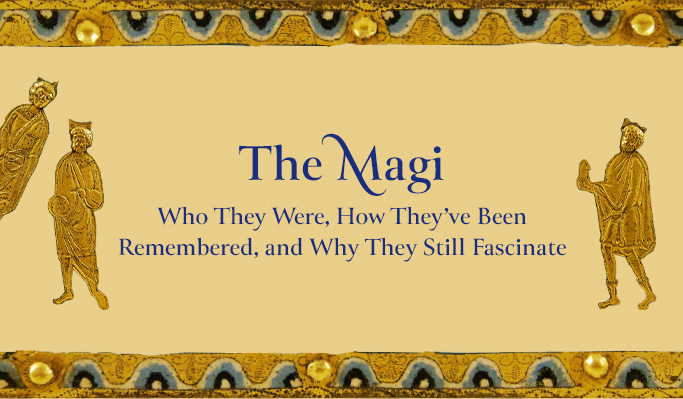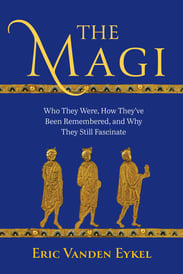
On the fourth Thursday of November, many residents of the United States celebrate “Thanksgiving,” a national holiday during which tables around the country are filled with turkeys, casseroles, and some variety of cranberry relish that simultaneously mystifies and comforts. Intended to celebrate the good fortune of the Puritans who arrived on the eastern shores of North America in the early 1620s, Thanksgiving in the United States also coincides with the start of the Christmas season. And so, in the wake of the Thanksgiving meal, many families begin decorating their homes with lights, trees, and of course, nativities.
A nativity is a miniature representation of the birth of Jesus. Some are small enough to sit atop the mantel of a fireplace, while some are large enough that they do better in the front yard. Details vary, but all nativities share the same basic scene and cast of characters. Imagine a nativity in your mind. Place yourself within the scene. Where are you? Who is there with you? What are people doing?
If you are at all familiar with the traditional stories of Jesus’s birth—whether from reading the New Testament, attending Christmas pageants, or watching the Hallmark Channel during the holidays— you imagined yourself in a small town called Bethlehem. But what about the specifics? Did you find yourself in a stable? If so, where was it? Behind a crowded hotel? Down a dark alley? On the edge of a starlit field? Or perhaps you saw yourself in a house? If so, what sort of house was it? Was it elegant? Was it simple? Or maybe, when you imagined yourself at the birth of Jesus, you imagined yourself in a rugged cave, just outside the city. If that’s you, then what sort of cave was it? Was it deep in the side of a mountain? Or was it more of a rocky outcropping?
Next, let’s ask the question of who (and what) is there with you. We can start with the obvious cast of characters. Jesus is there (it’s his birth, after all!), and you probably imagined Mary, his mother, kneeling nearby. His father Joseph stands somewhere off to the side, perhaps looking a bit disinterested or even confused. But who else was there? Was there an angel? Were there farm animals? A donkey, perhaps? Maybe a few lambs? An ox? What about other humans? Are there shepherds? If so, how many? How are they dressed? What are they doing? Do you see anyone else? Anyone at all?
You also likely saw three older men somewhere in the scene. They were either riding in on camels or kneeling before the newborn Jesus. It is possible that they were dressed in elegant, exotic clothes, vastly different from what others in the scene are wearing. They may have been wearing crowns, and they may have had a darker skin tone than other people in the scene. You probably imagined each of these men holding some sort of elaborately decorated container, and you probably are not surprised that they appeared in your vision. I’m not surprised either. After all, you are currently reading a book about them.
Strangers from the East
The gift-bearing strangers who visit Jesus after his birth are an integral component of the traditional Christmas story, and any nativity would seem incomplete without them. Aside from Jesus, Mary, and a handful of others, there are few characters in the history of Christianity who have exercised a more profound influence on our collective imaginations. Their story has been told and retold for centuries, in many kinds of media and for a variety of purposes. Outside of the New Testament, they appear in several early Christian texts, both as characters and as sermon illustrations. They have captured the attention of artists and inspired thousands of paintings, mosaics, and sculptures. They go by different titles and names. Some people refer to them as “the wise men,” while some prefer “kings.” Still others may have grown up referring to them as “sages” or “astrologers” or by their traditional names: Caspar, Melchior, and Balthasar. But in the New Testament, they are simply “Magi.”1
The fact that the Magi feature so prominently in the Christian tradition would seem to suggest that they are major characters in the New Testament. But this is not the case. The story of Jesus’s birth appears in two of the four New Testament Gospels—Matthew and Luke—and the Magi appear in only one of them. Luke’s Gospel begins with a dedication (Luke 1:1–4), the announcement to Elizabeth and Zechariah of the birth of John the Baptist (Luke 1:5–24), the announcement to Mary of the birth of Jesus (Luke 1:26–38), Mary’s visit to Elizabeth (Luke 1:39–56), and the birth of John the Baptist (Luke 1:57–80). Joseph and Mary then begin their trek from Nazareth to Bethlehem to register in a census, and while they are there, Mary gives birth to Jesus. She uses a feeding trough as a cradle, since “there was no place for them in the inn” (Luke 2:7 NRSV). After this, angels announce the birth to nearby shepherds, and the shepherds travel to Bethlehem to visit (Luke 2:8–20). Luke’s account of Jesus’s birth ends without even a hint of any Magi coming to visit.
Matthew, by contrast, begins with a lengthy genealogy that traces Jesus’s family line back through King David, all the way to Abraham (Matt 1:1–17). The goal of this genealogy is to establish in the reader’s mind that Jesus’s story is inseparable from the story of Israel and to emphasize that Jesus is a descendant of King David. Matthew then introduces Mary and Joseph. The couple is not yet married, but Mary is pregnant (Matt 1:18). Joseph is troubled by how to handle the situation until an angel comes to him in a dream and tells him, “That which is begotten in her is from the Holy Spirit” (Matt 1:20). Joseph and Mary then wed and Jesus is born shortly thereafter. It is at this point that Matthew tells the story of the Magi.
Matthew’s story of the Magi spans twelve short verses, and within those twelve verses, details are sparse. The Magi come to Jerusalem and Bethlehem “from the East” (Matt 2:1). They are led there by a star, and their intention is to honor a king (Matt 2:2). They have a brief run in with King Herod before they make it to Jesus (Matt 2:3–8), and after they present their gifts of gold, frankincense, and myrrh, they are warned by an angel to go home by a different route (Matt 2:11–12). Neither the Magi nor their gifts are mentioned in the remainder of Matthew’s Gospel. If you removed these twelve verses, you would hardly know that they had been there in the first place. Put simply, Matthew’s story of the Magi contains a lot less than most readers remember.
So who are the Magi in Matthew? How many are there? Where do they come from? What is the nature of the star that leads them? Why are they interested in Jesus? What made them choose these specific gifts? Why does Matthew bother to tell their story in the first place? What’s the point? All these questions are important, yet Matthew doesn’t address any of them explicitly. Instead, he leaves it up to his readers to connect the dots. Various attempts to do just this have produced no shortage of reasoned studies and wild speculations, and for nearly two thousand years, the Magi have journeyed through the minds of authors, readers, theologians, biblical scholars, and artists. This is a book about that journey.
This is an excerpt from the introduction of The Magi: Who They Were, How They’ve Been Remembered, and Why They Still Fascinate.



